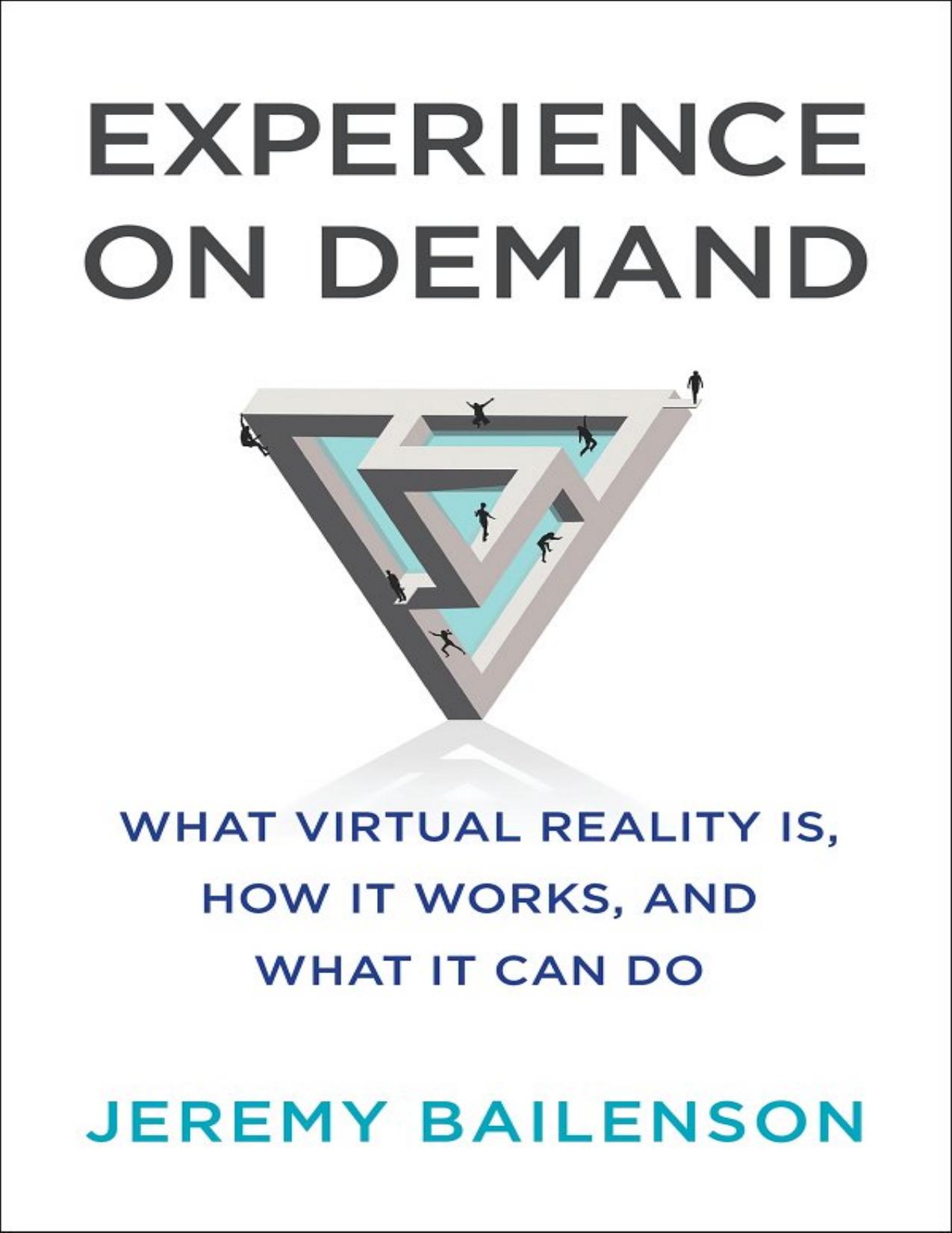Experience on Demand by Jeremy Bailenson

Author:Jeremy Bailenson
Language: eng
Format: epub, pdf
Publisher: W. W. Norton & Company
CHAPTER 6
ABSENCE MAKES THE PAIN GROW FAINTER
In 2014, at a party with some colleagues from Stanford, I joined the ranks of millions of Americans who have suffered from lower back pain. It all started when my three-year-old daughter toddled over too close to the edge of a pool. Fearing she might fall in, with my paternal instincts kicking in, I lunged to intercept her. At the time I barely felt the slight twinge in my back, and dismissed it as nothing to worry about. An hour later I was lying on the floor of my host’s back porch while professors politely stepped around me, staring at the ceiling and wondering how I would ever get up. I had never been in so much pain in my life.
I won’t soon forget how excruciating daily life was in the months after I injured myself. Not a moment went by when I was not experiencing a general discomfort, occasionally punctuated by stabs of searing pain, as I attempted the most routine daily activities, like getting up from a chair or holding the daredevil child who started it all. Most readers will have some idea of what I’m talking about: 80% of adults in America will experience acute lower back pain in their lifetime, and at any given time, a quarter of Americans will have suffered its effects within the last three months. Lower back pain is so common, and so debilitating when it is occurring, that one study showed it to be the third-most burdensome condition in the United States, exceeded only by ischemic heart disease and chronic obstructive pulmonary disease.1
In the end, I was lucky—after six months of physical therapy exercises I was almost back to normal. But for many people, the pain doesn’t go away—about 10% of the millions of people who suffer from lower back pain will find no relief through therapy or surgery. When such suffering persists beyond six months, medical health professionals categorize the pain as chronic. For these patients, the seemingly innocuous back tweak is a passport to a land of unremitting physical and psychological torment. An estimated 20–30% of Americans, or as many as 100 million people, suffer from chronic pain. While the origin of chronic pain can often be easily diagnosed, as in the case of lower back injury, its causes can also be complicated and mysterious, with no clear path of treatment. Either way, the grueling experience of dealing with constant pain carries over into every aspect of an individual’s life, affecting everything from sleep, work productivity, and personal relationships to the patient’s own mental health, and contributing to a negative feedback loop that can lead to severe depression.2
One way doctors have sought to treat those suffering from acute and chronic pain is to administer powerful prescription opioid painkillers like oxycodone and hydrocodone. Indeed, my doctor and I discussed this possibility before we decided to see first how I responded to physical therapy. He was no doubt wary due to a growing awareness in
Download
This site does not store any files on its server. We only index and link to content provided by other sites. Please contact the content providers to delete copyright contents if any and email us, we'll remove relevant links or contents immediately.
Learning SQL by Alan Beaulieu(6239)
Weapons of Math Destruction by Cathy O'Neil(6220)
Digital Minimalism by Cal Newport;(5707)
iGen by Jean M. Twenge(5387)
Sapiens by Yuval Noah Harari(5325)
The Age of Surveillance Capitalism by Shoshana Zuboff(4252)
Elon Musk by Ashlee Vance(4088)
Thing Explainer by Randall Munroe(3911)
Apollo 8 by Jeffrey Kluger(3672)
Future Crimes by Marc Goodman(3566)
The Science Book (Big Ideas Simply Explained) by DK(3256)
Who Can You Trust? by Rachel Botsman(3112)
The Innovators: How a Group of Hackers, Geniuses, and Geeks Created the Digital Revolution by Walter Isaacson(3007)
I Live in the Future & Here's How It Works by Nick Bilton(2963)
Infinite Energy Technologies by Finley Eversole(2954)
Steve Jobs by Walter Isaacson(2863)
Dawn of the New Everything by Jaron Lanier(2751)
Chernobyl by Serhii Plokhy(2516)
Ben Franklin's Almanac by Candace Fleming(2495)
